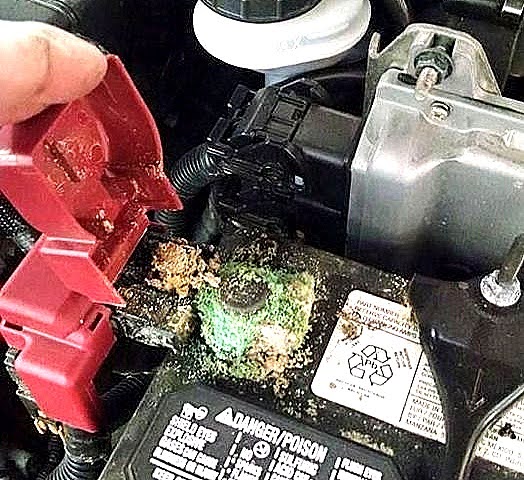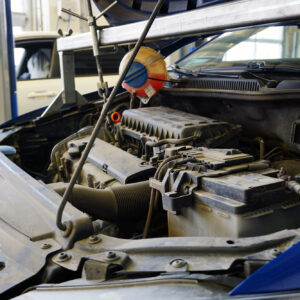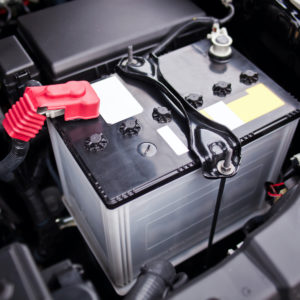
When a car battery begins to leak, you’ll notice chalky green acid deposits forming around the battery terminals. This is acid weeping up out of the battery case up past the place where lead posts pass through the plastic case, but it can also mist out of the battery cell cap vents and dampen the top of the battery with acid moisture.
This causes the same chalky white or green deposits on the battery hold-down bracket, the metal battery tray, and on the terminals as well.
The battery case can also leak if damaged.
During the charging process, the acid fumes can be forced out of the battery and are drawn onto the cable terminals, nearby wiring connections, and battery tray.
This isn’t as much of a problem when you’re using a trickle charger as it is when you charge with a shop-grade high-current charger.
But because the engine compartment is so hot, many batteries will be enclosed in a plastic box to prevent the acid from boiling due to engine compartment heat. If the plastic battery enclosure has been removed when the vehicle came with one, the battery may boil in hot weather while driving even if nothing else is wrong.

Overcharging the Battery
A bloated, swollen, or warped battery casing means the battery has overheated, either from overcharging, high engine compartment temperatures, or issues within the battery itself. There will typically be acid steam due to these factors.
Overcharging is one common cause of battery faults, but there are many others. It can cause the battery to swell, buckle the internal battery plates, and make misty acid deposits, but the alternator won’t overcharge the battery unless there is an issue with the voltage regulator or its circuits. When charging the battery, if the voltage goes higher than 15.5 volts, it means the battery is sulfated and needs to be replaced.
The maximum voltage is lower for AGM batteries, which stands at 14.5 volts.
Also, overcharging the battery can cause the active plate material to disintegrate and fall out of the supporting grid framework.
Any information provided on this Website is for informational purposes only and is not intended to replace consultation with a professional mechanic. The accuracy and timeliness of the information may change from the time of publication.
































